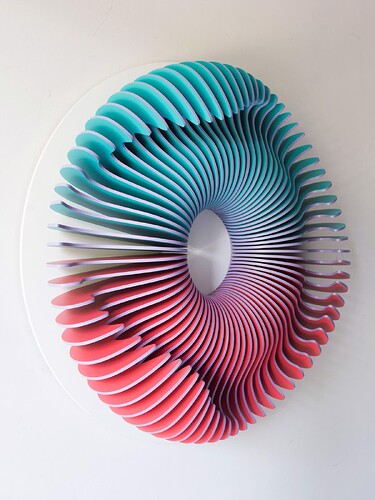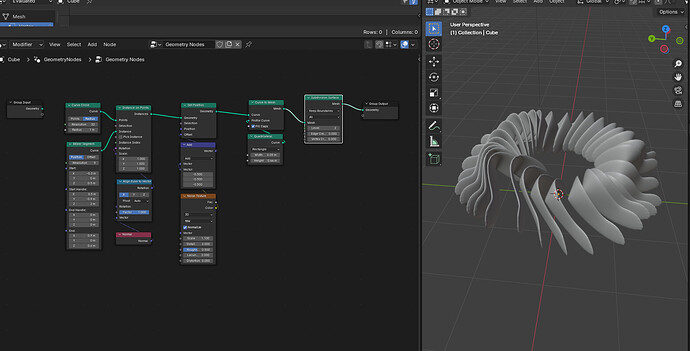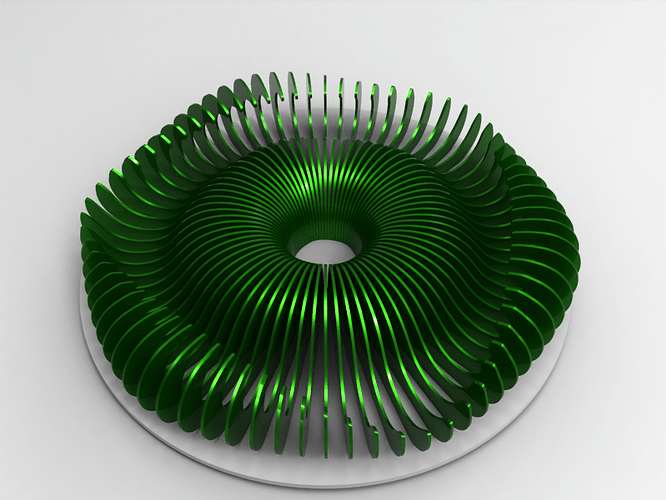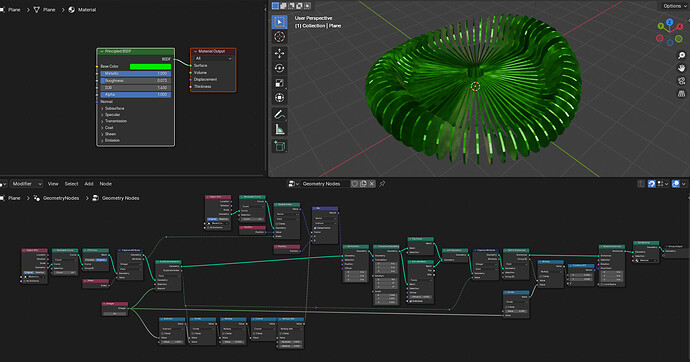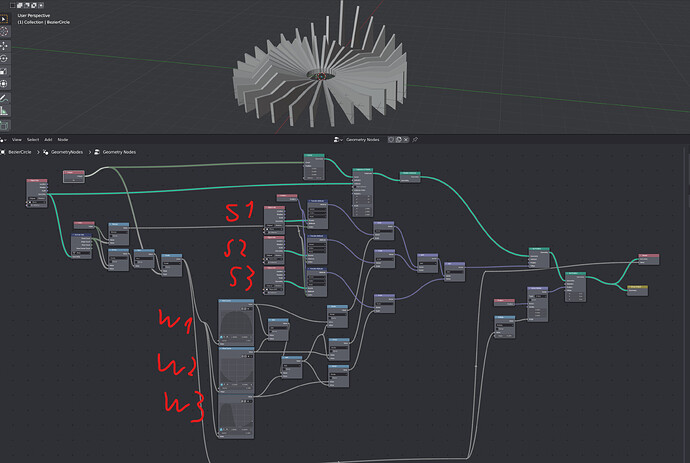Hey Blender people,
I am new here so let me know if I forgot some necessary info.
I would like to generate a model looking something like the picture attached. I tried a classic circular array of solidified planes and then bolian a secound manually modeled object. Even though this worked more or less, I was wondering if there is a better approach maybe using geometry nodes or a parametric add on. The goal is to get an easy adaptable workflow for further design studies with smoth transitions of the iterated geometries. I hope this was clear enough for you to understand. I would be very happy for your expertice.
Best Kay
Hi and welcome to BA
Yes, you can use geonodes for this kind of procedural array,
Heres a basic one to give you an idea.
Hope that helps
made in Blender 4.1
3 Likes
Thank you! I will try it and get back to you with the results!
1 Like
Well, I tried but didn’t manage to generate the exact shape as in the picture. Since I’m rather new to blender and nodes, I switched to a traditional CAD software. I managed to get the shape by blending one plane into another (extreme points), which is probalby the equivalence to blenders “bridge edge loop”, and then cutting out the peaces. Therefore I only have to change 3 or 4 surface outlines and redo the blending and cutting to change the shape. This process should work in blender using bridge edge loop and some modifiers (maybe even in a node setup to speed up the process?).
My solution is not ideal an the process takes some time but I am quied happy with the result. If anybody manages to get the result in a more procedural/parametric workflow I would be very happy to see their approach.
circular morph.blend (101.3 KB) (File saved in 4.2 but you should be able to open it in 4.1)
Proof of concept blending between 2 profiles:
…even the simplest 2 profile case is quite the technical exercise. With some work you should be able to generalize it to however many profiles but maybe doing it in CAD and importing the result is still the easiest.

5 Likes
Tried something based on meshes (should be extendable to curves?), basically implementing shape keys. I rely on the indices of the different shapes corresponding to the same vertices, so maybe not the most robust approach…but is very easily extended to more shapes:
Each shape is associated to its own float curve that defines how much weight it gets over the course of the circle.
circular_shape_blend_3.3.4_v01.blend (962.2 KB)
5 Likes
